In the realm of kitchen appliances, the waffle baker has emerged as a favorite among both casual bakers and culinary enthusiasts. As we delve into the world of waffle makers, it’s clear that the European and American markets have distinct characteristics that shape the landscape of this niche industry. Understanding the trends, consumer preferences, technological advancements, and the regulatory environment surrounding these appliances is key to navigating the competitive and ever-evolving waffle baker market. This exploration will shed light on the factors driving sales, the differences in consumer behavior between Europe and America, the role of online retail, and the future prospects for waffle bakers as they continue to adapt to the standards set by CE-EN 60335.
Understanding the Waffle Baker Market in Europe and America
The waffle baker market in Europe and America is a vibrant sector that reflects the diverse culinary preferences and technological advancements in these regions. Understanding this market requires a nuanced look at the various factors that drive consumer demand, industry trends, and the unique characteristics of each geographical area.
In Europe, the waffle baker market is characterized by a strong emphasis on traditional recipes and artisanal craftsmanship. Countries like Belgium, the Netherlands, and France are synonymous with waffles, and the market is rich with local specialties. The demand for high-quality, handcrafted waffles is high, and consumers are willing to pay a premium for these premium products. The European market is also influenced by health consciousness, with a growing number of consumers seeking out organic and gluten-free waffle options.
On the other side of the Atlantic, the American waffle baker market is a blend of innovation and convenience. The U.S. market is larger and more varied, with a range of waffle makers catering to different lifestyles and budgets. American consumers are accustomed to quick and easy food solutions, and the waffle baker industry has responded with a variety of waffle makers that are simple to use and produce consistent results. The market is also seeing a surge in the popularity of Belgian-style waffles, which are now a staple in many American households.
Regional variations play a significant role in shaping the waffle baker market. In the U.S., for example, there is a significant difference between the demand for breakfast waffles and the demand for specialty waffles, such as those served in gourmet cafes and bakeries. The breakfast waffle segment is often dominated by larger brands that offer value and convenience, while the specialty segment is driven by niche players focusing on quality and unique flavors.
The European market, on the other hand, has a more pronounced focus on quality and variety. There is a significant presence of family-owned bakeries and cafes that have been making waffles for generations. These establishments are often seen as a cornerstone of community life, and their waffles are prized for their authenticity and taste. The European market also benefits from a strong tourism industry, which contributes to the demand for regional waffle varieties.
Technological advancements have also had a profound impact on the waffle baker market. In Europe, for instance, there has been a steady move towards automated and semi-automated waffle baker machines, which are designed to produce consistent waffles with minimal effort. This trend is also evident in the U.S., where innovation in materials and design has led to waffle makers that are not only efficient but also aesthetically pleasing.
Despite the differences, both European and American waffle baker markets share common challenges. One of the most significant challenges is ensuring compliance with safety standards. In both regions, the CE-EN 60335 standard is a critical benchmark for the electrical safety of appliances, including waffle makers. This standard outlines the requirements for electrical safety, energy efficiency, and user protection, and it is essential for companies looking to enter these markets.
Consumer preferences are also a key factor in understanding the waffle baker market. In Europe, there is a strong preference for traditional and regional flavors, while in the U.S., there is a trend towards international flavors and health-conscious ingredients. This has led to an increase in the variety of waffle flavors and fillings, from classic maple syrup and butter to exotic fruits and vegan options.
Finally, the waffle baker market in Europe and America is subject to economic and cultural shifts that can impact consumer behavior. In Europe, the rise of health consciousness and the desire for high-quality, local products are shaping the market. In the U.S., the growing demand for convenience and the influence of social media on consumer trends are driving the industry forward.
In conclusion, the waffle baker market in Europe and America is a complex and dynamic landscape that requires a keen understanding of regional nuances, technological trends, consumer preferences, and regulatory compliance. By navigating these factors effectively, companies can tap into the potential of this market and create products that resonate with consumers on both sides of the Atlantic.
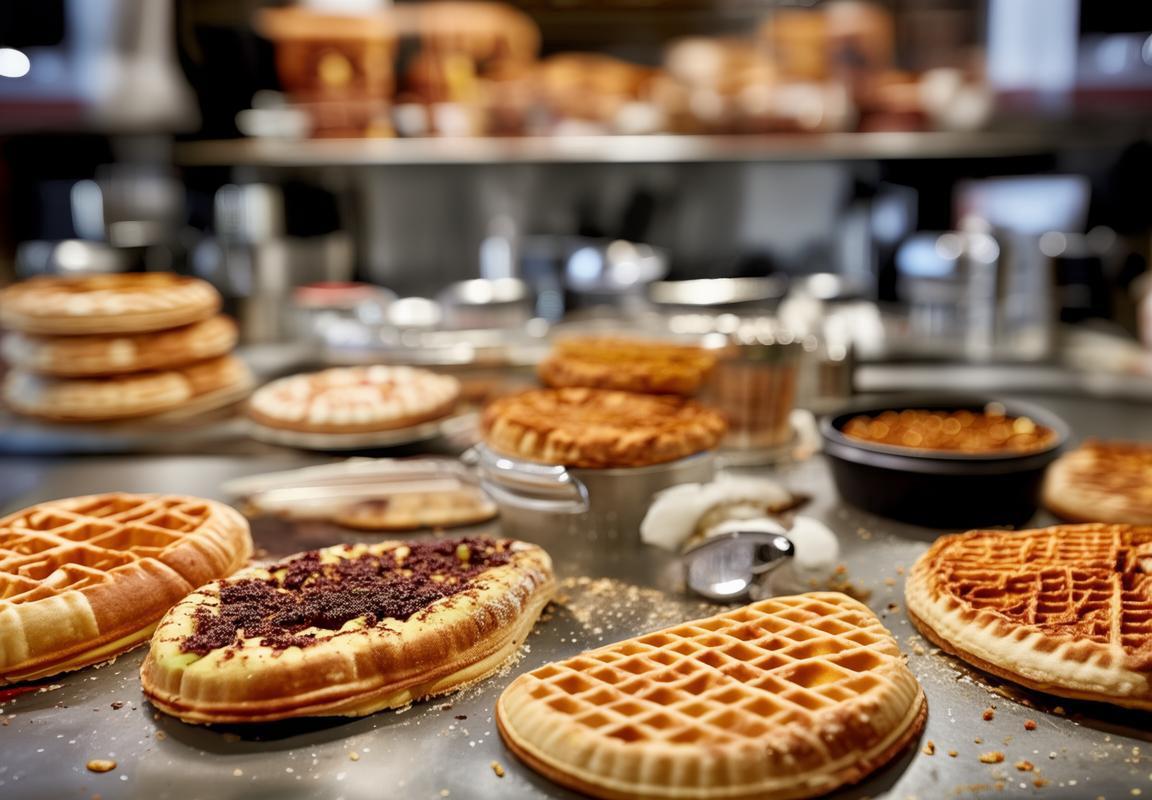
CE-EN 60335: The Crucial Safety Standard for Waffle Makers
In the bustling kitchens of Europe and America, the humble waffle baker stands as a cornerstone of culinary convenience. Yet, behind its sleek design and user-friendly interface lies a critical set of regulations that ensure the safety and reliability of these kitchen appliances. Central to this is the CE-EN 60335 standard, a vital benchmark that governs the safety of household and similar electrical appliances.
The CE mark, familiar to many, signifies compliance with the essential requirements of safety, health, and environmental protection. It’s a symbol of quality that European consumers look for when purchasing any electrical device. When it comes to waffle makers, this certification is non-negotiable, as it addresses potential hazards such as electrical shock, overheating, and fire risk.
EN 60335, on the other hand, is a comprehensive European standard that outlines the safety requirements for household appliances. It encompasses a wide range of electrical products, including small kitchen appliances like toasters, kettles, and, of course, waffle makers. This standard is not just a set of rules; it’s a safeguard for consumers who expect their appliances to operate without incident.
At the heart of the CE-EN 60335 is a thorough assessment process that manufacturers must undergo. It involves rigorous testing to ensure that waffle makers meet specific safety criteria, such as:
- Electrical Safety: Appliances must be designed to prevent electrical shock and leakage currents that could harm users.
- Thermal Protection: Overheating can be a significant risk, so the standard requires effective thermal protection mechanisms.
- Fire Protection: Waffle makers are tested to ensure they won’t contribute to fires in the event of a fault.
- Mechanical Safety: Components must be robust and durable to prevent injuries during normal use or from accidental misuse.
Compliance with CE-EN 60335 isn’t just about passing tests, though. It’s about the ongoing commitment of manufacturers to adhere to these standards throughout the product lifecycle. This includes the design, manufacturing, packaging, labeling, and the after-sales service of waffle makers.
In Europe, the standard is part of the New Approach, which aims to harmonize technical regulations across the EU. For a waffle maker to bear the CE mark, it must conform to these regulations and undergo a conformity assessment procedure. This process can vary depending on the risk associated with the product and may involve self-declaration, type-examination, and quality assurance.
In the United States, the equivalent standard is UL 60335, which is recognized by the Occupational Safety and Health Administration (OSHA). While the two sets of standards have some differences, the underlying principles of safety are the same. Waffle makers sold in the U.S. must meet similar requirements to ensure consumer safety.
The CE-EN 60335 standard also reflects the broader shift towards energy efficiency and environmental sustainability. Manufacturers are increasingly incorporating energy-saving features into their waffle makers, not just to meet consumer demand but also to comply with regulations that promote energy conservation.
Moreover, the standard is dynamic and evolves with technological advancements. As new materials and components are introduced into the market, the standards must adapt to assess the safety risks they present. This means that manufacturers must stay informed about the latest updates to the standard to ensure continued compliance.
For consumers, the CE-EN 60335 certification is a critical piece of information when making a purchase. It’s a reassurance that the waffle maker they choose has been designed and manufactured with safety in mind. It’s a mark of trust that can make all the difference in a world where electrical appliances are an integral part of daily life.
In conclusion, the CE-EN 60335 standard is not just a technical specification; it’s a cornerstone of confidence in the waffle baker market. It ensures that consumers can enjoy their breakfast treats without compromising on safety, while also providing manufacturers with a framework for innovation and excellence in appliance design.
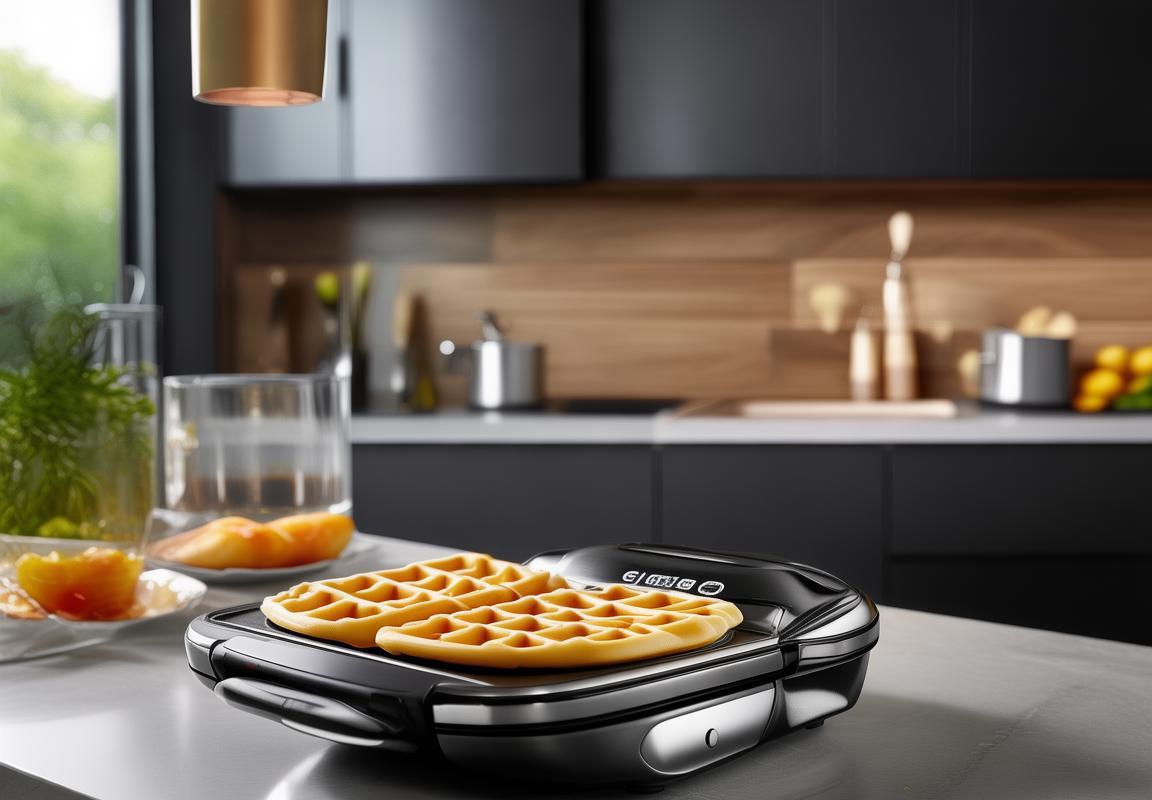
Market Growth Trends and Consumer Preferences
The waffle baker market in Europe and America has seen a surge in popularity, driven by a variety of factors. From the rise of home cooking enthusiasts to the convenience of single-serve appliances, the landscape is continually evolving. Let’s delve into the key trends and consumer preferences shaping this dynamic sector.
Consumer demand for convenience is at an all-time high, and this is reflected in the market for waffle makers. Compact, easy-to-use models that promise quick and hassle-free waffle preparation are increasingly favored. The emphasis on simplicity and efficiency has led to a proliferation of single-serve waffle makers, which are perfect for individuals or small families.
Health consciousness is another significant trend influencing the waffle baker market. Consumers are seeking out healthier alternatives to traditional breakfast options, and this has spurred the development of waffle makers that allow for customization. Features like adjustable temperature controls and non-stick surfaces enable users to create waffles with minimal oil or butter, catering to those looking to reduce their intake of unhealthy fats.
The rise of gourmet and artisanal food has also played a role in shaping consumer preferences. Waffle makers that offer a variety of patterns and textures are becoming more popular, as they allow for creative and visually appealing waffles. The market is seeing an influx of high-quality, durable appliances that cater to those who appreciate the art of waffle making and are willing to invest in a premium product.
Innovation in design and functionality has become a key driver of market growth. Smart waffle makers that can be controlled via smartphone apps or connected to smart kitchen systems are starting to gain traction. These devices offer the convenience of remote operation and the ability to program settings, which is particularly appealing to busy professionals and tech-savvy consumers.
The preference for variety is also evident in the market. Consumers are looking for waffle makers that can produce different types of waffles, from classic Belgian to American-style, even heart-shaped or novelty designs. This versatility is a major selling point, as it allows users to enjoy a variety of waffle experiences without needing multiple appliances.
Sustainability is another growing concern among consumers. As awareness of environmental issues increases, there is a trend towards eco-friendly products. Waffle makers made from recycled materials or those that are energy-efficient are becoming more sought after. Brands that can demonstrate a commitment to sustainability are likely to capture the attention of environmentally conscious consumers.
The rise of social media and influencer culture has had a profound impact on consumer preferences. Visual appeal and the ability to share waffle-making experiences on platforms like Instagram and TikTok are becoming more important. Waffle makers with unique designs or those that can produce Instagram-worthy waffles are likely to attract a younger demographic.
As the market continues to grow, there is also a trend towards personalization. Customizable waffle makers that allow users to choose from a range of patterns, colors, and even add-ons like mini waffle inserts are becoming more popular. This level of personalization not only caters to individual tastes but also provides a sense of ownership and uniqueness.
In conclusion, the waffle baker market in Europe and America is driven by a combination of convenience, health, innovation, and personalization. As consumers seek out appliances that meet their evolving needs, the market is poised for continued growth, with a focus on offering a wide range of options that cater to diverse preferences and lifestyles.
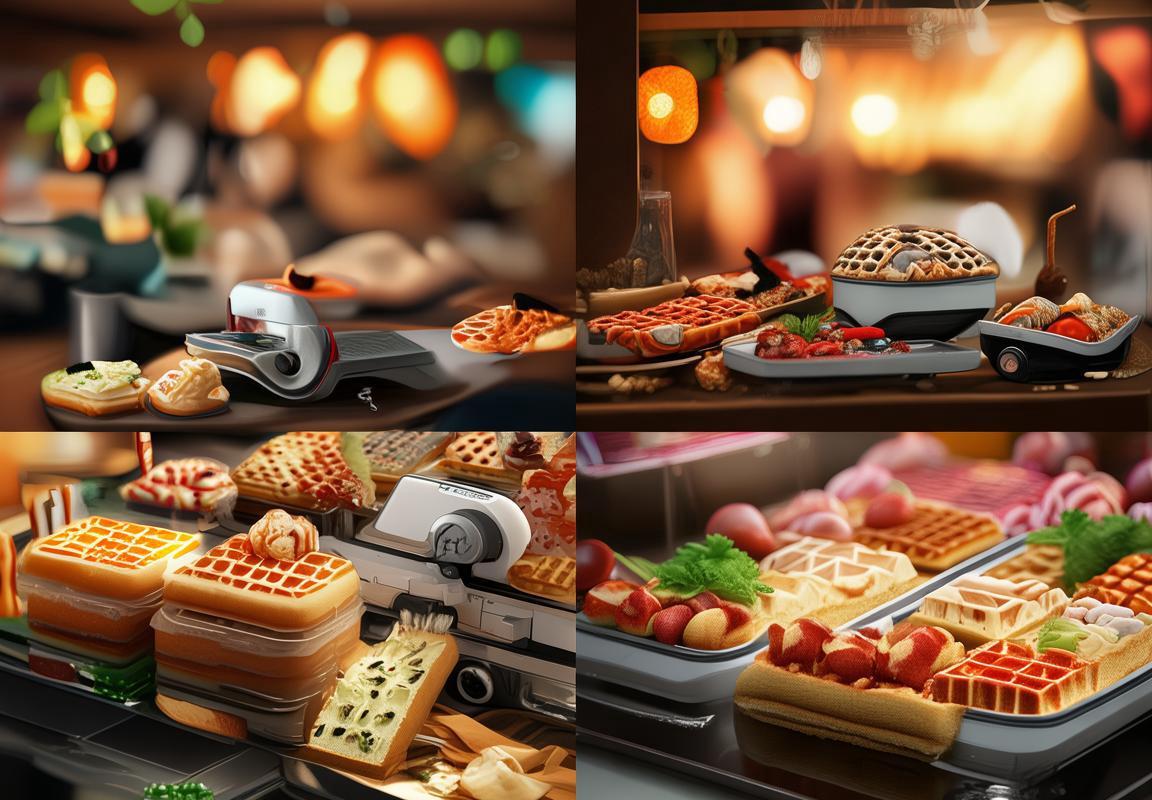
Innovation in Design and Technology
In the world of kitchen appliances, the waffle baker has seen a remarkable evolution, driven by both design and technological advancements. Here’s a glimpse into how these innovations have shaped the market and consumer preferences.
The rise of smart appliances has been a game-changer. Modern waffle makers are no longer just about flipping batter onto a grid. They now come equipped with features like programmable settings, allowing users to choose from a variety of waffle patterns and browning levels. Smart technology has also made these appliances more user-friendly, with digital displays and touch interfaces replacing the old dials and switches.
One of the latest trends is the integration of non-stick coatings. While non-stick surfaces have been around for years, the latest formulations promise even better release, making it easier to remove waffles from the grids without them sticking. This has been particularly appealing to consumers who value ease of cleaning and convenience.
Design-wise, there’s a clear shift towards sleeker, more compact appliances. With the popularity of minimalist aesthetics in kitchen decor, waffle makers are being crafted with slim profiles and contemporary colors. These compact designs not only save counter space but also make them more attractive to those who prefer a clutter-free kitchen environment.
Energy efficiency is another key factor influencing innovation. As consumers become more environmentally conscious, manufacturers are focusing on creating energy-saving models. Features like automatic shut-off after a certain period or energy-saving modes are becoming standard, reducing power consumption and aligning with the broader sustainability movement.
Customization is on the rise, too. Waffle makers are now available in a variety of shapes and sizes, catering to different preferences and occasions. From traditional square grids to Belgian-style round waffles, and even heart-shaped for romantic breakfasts, consumers have a plethora of choices. Some models even allow for interchangeable plates, so users can switch between patterns without having to buy multiple appliances.
The inclusion of advanced features such as timers and alarms is becoming more common. These features help ensure that the waffles are perfectly cooked to the desired consistency, and they’re especially appreciated by those who like to multitask or want to wake up to a freshly made breakfast.
One of the most significant technological breakthroughs in recent years has been the introduction of touchless controls. These hygienic features prevent the spread of germs by eliminating the need for physical contact with the appliance, which is particularly important in high-traffic kitchens or during flu season.
The material used in waffle makers has also seen advancements. Some appliances now use ceramic, which not only provides excellent non-stick properties but also distributes heat more evenly than traditional metals, resulting in a more consistent waffle texture.
Additionally, there’s a growing interest in eco-friendly materials. Biodegradable and recycled plastics are being used to manufacture some models, appealing to consumers who want to reduce their environmental footprint.
As technology continues to advance, we can expect to see even more innovative features in waffle makers. From connectivity with smartphones for remote operation to the incorporation of health and wellness benefits, such as temperature control for low-carb diets, the possibilities are virtually endless.
The market is also witnessing a surge in creative designs, inspired by international cuisines. Waffle makers with patterns that mimic the iconic waffle iron designs from countries like Belgium and France are becoming popular among those who enjoy cooking with a global twist.
Finally, there’s a trend towards multipurpose appliances. Some waffle makers now come with additional attachments or are part of a larger set that includes other kitchen gadgets, such as a crepe maker or a sandwich press. This kind of versatility is attractive to consumers looking for all-in-one solutions that save space and simplify meal preparation.
In summary, the innovation in design and technology of waffle makers has transformed the appliance from a simple kitchen gadget into a versatile and sophisticated tool that enhances the cooking experience. As consumer preferences evolve, so too will the features and functionalities of these beloved breakfast staples.
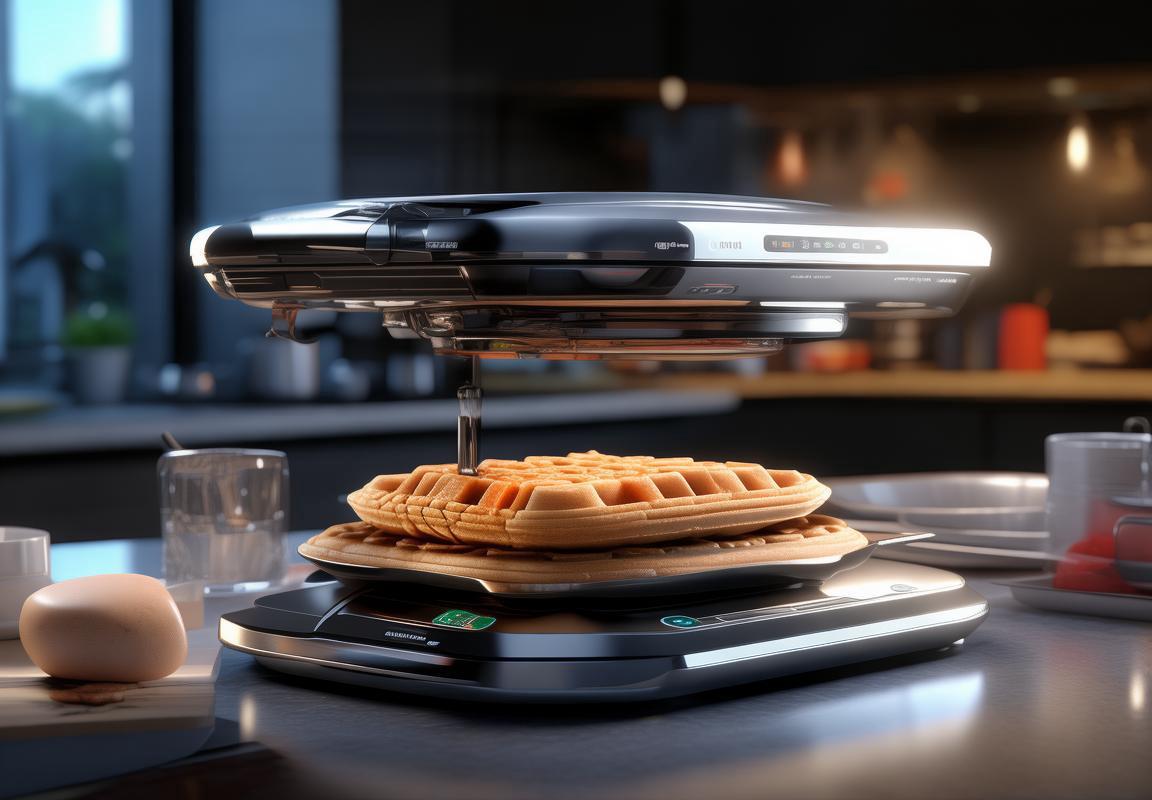
Challenges and Opportunities in the European and American Markets
In the dynamic landscape of the European and American markets, the faces a unique set of challenges and opportunities. From shifting consumer behaviors to evolving technological advancements, the industry must navigate a complex terrain to thrive.
Shifting Consumer DemandsConsumers in both Europe and America are increasingly seeking appliances that not only perform their intended function but also offer a blend of style, functionality, and sustainability. The demand for smart kitchen appliances that can be controlled remotely or through voice commands is on the rise. This shift in preference has prompted manufacturers to focus on integrating advanced technology into their waffle makers and other kitchen appliances.
Eco-friendly and Energy-Efficient DesignsWith environmental concerns at the forefront, there’s a growing trend towards eco-friendly and energy-efficient appliances. European consumers, in particular, are sensitive to the environmental impact of their purchases. This has led to a surge in demand for appliances that are energy-saving and have a lower carbon footprint. American consumers, while also environmentally conscious, are more focused on the immediate benefits of energy savings and cost reduction.
Regulatory ComplianceNavigating the regulatory landscape is a significant challenge for manufacturers. Both regions have stringent safety standards, with Europe adhering to the CE marking and the American market requiring compliance with the EN 60335 standard. Ensuring that waffle makers meet these requirements while also incorporating new features can be a complex task. However, it also presents an opportunity for manufacturers to differentiate their products through superior safety and quality.
Technological IntegrationThe integration of technology into kitchen appliances is a double-edged sword. On one hand, it opens up new possibilities for innovation, such as the ability to connect waffle makers to smartphones or smart home systems. On the other hand, it introduces new challenges, such as ensuring compatibility and addressing potential security concerns. Manufacturers must balance the desire to offer cutting-edge features with the need for reliable, secure appliances.
Market SaturationBoth the European and American markets are highly saturated, with numerous brands and models available. Standing out in such a crowded market requires a unique selling proposition (USP). This could be anything from a distinctive design to a unique cooking feature, such as the ability to make different types of waffles. The challenge lies in identifying what consumers truly value and delivering it in a way that sets the product apart.
E-commerce ExpansionThe rise of e-commerce has transformed the way consumers purchase kitchen appliances. Online platforms offer a wider range of options and the convenience of shopping from home. However, this shift also presents challenges, such as the need to ensure the quality of products when they are delivered directly to the consumer. For manufacturers, it’s an opportunity to leverage digital marketing and enhance the online shopping experience.
Globalization and Cultural DifferencesThe globalization of the kitchen appliance market means that manufacturers must consider cultural differences when designing and marketing their products. What is popular in one region may not resonate with another. Understanding these cultural nuances is crucial for successful market penetration. It requires a delicate balance between adapting to local preferences and maintaining a consistent brand identity.
Sustainability and Ethical ManufacturingConsumers are not just looking for products that are sustainable in use but also those that are produced sustainably. Ethical manufacturing practices and the use of eco-friendly materials are becoming more important. This presents an opportunity for manufacturers to appeal to a socially conscious consumer base, but it also requires a significant investment in sustainable processes and supply chains.
In conclusion, the European and American markets for kitchen appliances, including waffle makers, offer a multitude of challenges and opportunities. By staying attuned to consumer preferences, embracing technological innovation, and navigating the complexities of compliance and globalization, manufacturers can capitalize on these dynamics to drive growth and success.

Regulatory Compliance and Its Impact on Waffle Makers
Navigating the complex landscape of international markets, regulatory compliance stands as a cornerstone for the success of waffle makers in Europe and America. Here, we delve into the specifics of CE-EN 60335 compliance and its profound impact on the industry.
The CE Mark is a symbol of conformity with health, safety, and environmental protection standards set by the European Union (EU). It is a critical indicator for consumers, signaling that a product meets the necessary safety requirements to be sold within the EU. For waffle makers, achieving CE certification is not just about adhering to regulations; it’s about ensuring consumer trust and safety.
EN 60335 is a series of safety standards developed by the European Committee for Electrotechnical Standardization (CENELEC) and the International Electrotechnical Commission (IEC). This standard applies to a wide range of household and similar electrical appliances, including waffle makers. It encompasses various aspects such as electrical safety, mechanical safety, thermal hazards, and energy efficiency.
One of the primary challenges for manufacturers is the detailed testing process required to comply with CE-EN 60335. This involves rigorous evaluation of the product’s design, materials, and manufacturing processes. The tests are conducted to ensure that the waffle maker does not pose any risk of electric shock, fire, or injury to users.
Compliance with CE-EN 60335 has several impacts on the waffle maker market:
-
Quality Control: Ensuring compliance often leads to higher quality control measures during production. This can enhance the longevity and reliability of the products, giving consumers more confidence in their purchases.
-
Cost Implications: The process of obtaining CE certification can be expensive, involving both testing and the cost of materials that meet the standard. These costs are often passed on to the consumer, which can affect pricing strategies and market positioning.
-
Market Access: Compliance is a prerequisite for selling in the EU market. Without it, manufacturers risk being shut out of one of the world’s largest consumer markets. This makes certification a vital step in the international expansion of waffle makers.
-
Consumer Safety: Perhaps most importantly, compliance ensures that consumers are using products that have been thoroughly tested for safety. This is particularly crucial for waffle makers, which involve direct contact with heat and electricity.
In the American market, the equivalent to CE-EN 60335 is the UL (Underwriters Laboratories) safety certification. UL standards are widely recognized and respected in the United States and Canada, serving a similar purpose of ensuring product safety.
The impact of UL certification on the waffle maker market is similar to that of CE certification. It requires manufacturers to undergo rigorous testing to prove that their products meet the stringent safety requirements set by UL. This process can lead to improved product design and quality, which is a significant selling point for consumers.
However, there are also challenges associated with UL certification:
-
Testing and Certification Costs: Similar to CE certification, obtaining UL certification involves substantial costs, which can affect the competitiveness of the product in the market.
-
Regulatory Differences: The safety standards in Europe and America may differ slightly, meaning manufacturers must be adaptable and knowledgeable about the specific requirements of each market.
-
Market Penetration: Products with UL certification are often seen as safer and more reliable, which can give them a competitive edge in the American market.
-
Consumer Perception: Consumers in both Europe and America have come to expect certain levels of safety from products they purchase. Compliance with CE-EN 60335 and UL standards helps to meet these expectations and can be a key factor in consumer purchasing decisions.
In summary, regulatory compliance with standards like CE-EN 60335 and UL is a critical aspect of the waffle maker market. It not only ensures safety but also has a profound impact on product design, manufacturing, costs, market access, and consumer perception. While challenges are inherent in meeting these standards, the opportunities they present—such as market expansion and consumer trust—cannot be underestimated. For manufacturers, staying abreast of regulatory changes and investing in compliance is a strategic move that can pay dividends in the long run.
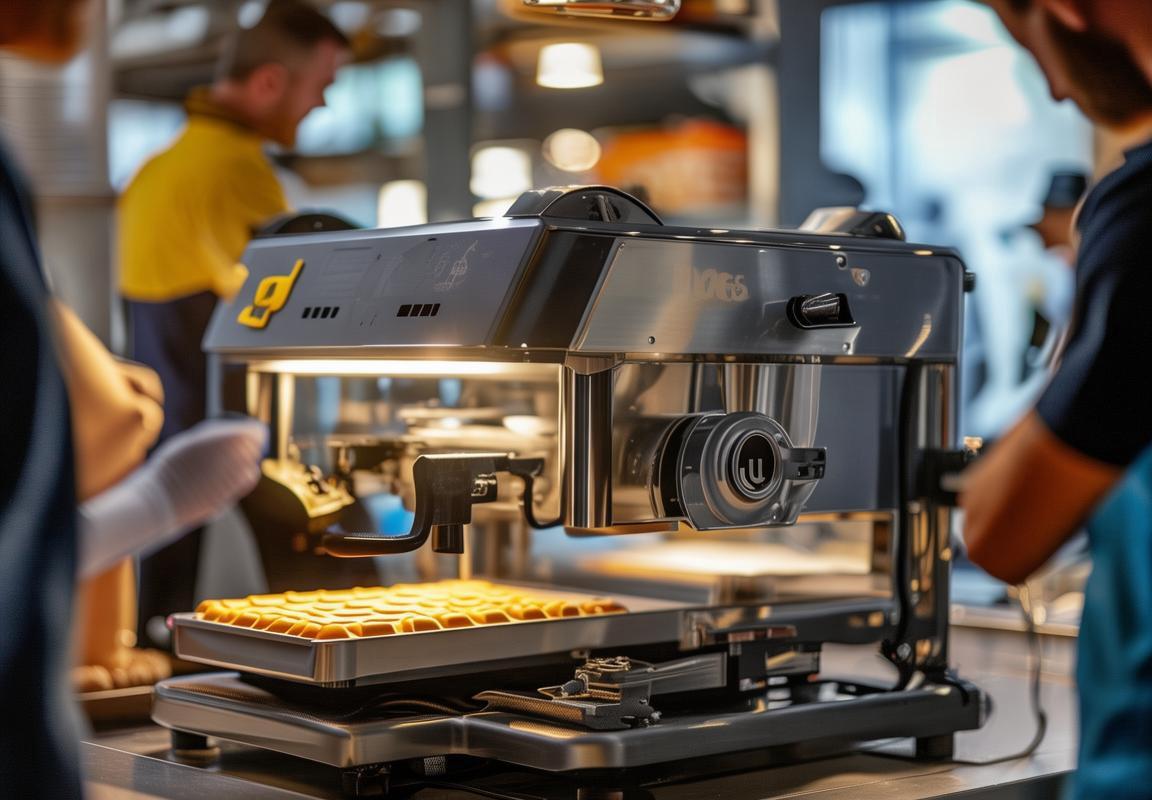
Consumer Insights: What’s Driving Sales?
Understanding consumer insights is pivotal in predicting sales trends and shaping the future of the waffle baker market. Let’s delve into the factors that are currently driving sales in this domain.
Modern consumers are increasingly health-conscious, and this shift has had a significant impact on the waffle baker industry. With a preference for whole grains, lower sugar, and healthier ingredients, waffle makers that offer versatile cooking options, allowing for the creation of nutritious waffles, are gaining popularity. From gluten-free to vegan options, the market is responding to these demands by offering a variety of health-forward products.
The convenience factor cannot be overstated when it comes to consumer purchasing decisions. Today’s busy lifestyles often leave little time for traditional cooking methods, making waffle makers that promise quick and easy preparation a hot commodity. The ability to produce a freshly cooked waffle in minutes is a major draw for families and individuals alike, leading to a surge in sales of compact, efficient waffle makers.
In an era where customization is king, the ability to tailor waffle recipes to personal preferences is a significant selling point. Features such as adjustable temperature settings, various waffle shapes, and even batter dispensing systems are becoming standard in new models, allowing consumers to experiment with flavors and textures. This level of customization has opened up new markets for waffle makers, particularly among food enthusiasts and bakers who are always looking to add a personal touch to their meals.
The influence of social media and influencer marketing is undeniable in today’s retail landscape. Waffle makers that have gained traction on platforms like Instagram, TikTok, and YouTube are often the ones that see a boost in sales. The visually appealing nature of waffles, combined with the creativity that can be showcased in their preparation, makes them a perfect fit for social media. A well-crafted video or photo of a unique waffle can spark a trend, leading to increased sales and widespread interest.
Portability is another key factor that drives sales. Whether it’s for a weekend getaway, a camping trip, or simply for the convenience of making a waffle on the go, portable waffle makers have found a niche market. The compact design and ease of cleaning make them appealing to consumers who value the flexibility to enjoy a waffle anytime, anywhere.
Sales are also being driven by the growing interest in breakfast foods that are both fun and indulgent. Waffles have always been a breakfast favorite, but the introduction of gourmet flavors and toppings has expanded their appeal. From sweet options like maple bacon to savory combinations such as avocado and chili, the variety of waffle options is expanding, and with it, the demand for waffle makers capable of producing these new creations.
Another trend that’s shaping sales is the rise of eco-friendly products. Consumers are more aware of their environmental impact and are looking for products that align with their sustainability values. Waffle makers made with recycled materials or designed to be energy-efficient are not only appealing for their eco-friendly qualities but also for the potential cost savings over time.
Lastly, the global pandemic has had a lasting effect on consumer behavior. With more people spending time at home, there’s been an increased focus on home entertainment and cooking. The ability to enjoy a leisurely breakfast or a weekend brunch at home has become a luxury in itself, and waffle makers have played a part in this new normal, contributing to their increased sales.
In conclusion, the factors driving sales in the waffle baker market are multifaceted, ranging from health and convenience to customization and sustainability. By staying attuned to these consumer insights, manufacturers can continue to innovate and meet the evolving demands of the market.
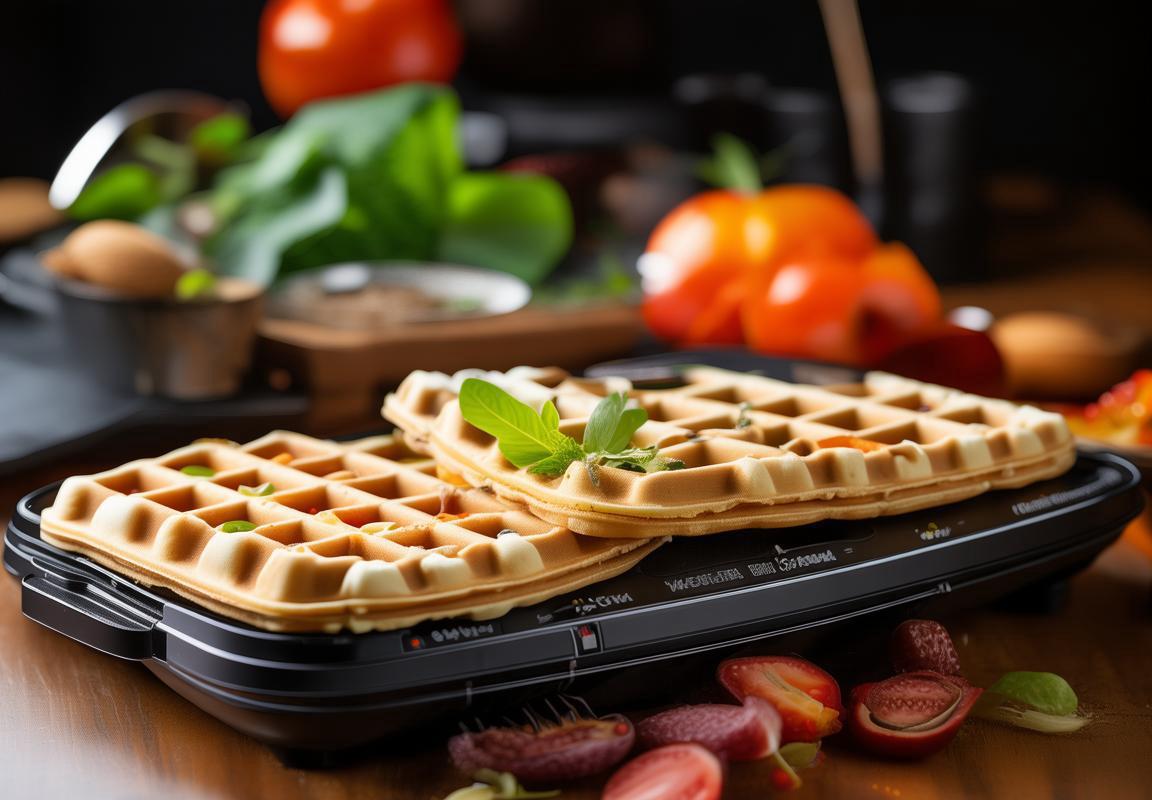
Comparative Analysis of European and American Consumer Behavior
The European and American markets, while sharing some commonalities, exhibit distinct consumer behaviors that shape the waffle baker industry. European consumers tend to prioritize craftsmanship and sustainability, while Americans are more inclined towards innovation and convenience. Here’s a closer look at these differences:
-
European Focus on Craftsmanship and SustainabilityEuropeans have a strong appreciation for well-crafted products that are not only functional but also environmentally friendly. This preference is evident in the waffle baker market, where there’s a growing demand for appliances made from sustainable materials and designed with energy efficiency in mind. Brands that can offer eco-friendly features or certifications like the EU’s Energy Label are likely to resonate well with this audience.
-
American Emphasis on Innovation and ConvenienceAmerican consumers are often on the lookout for the latest technological advancements and convenience features. Waffle makers in the U.S. market are increasingly incorporating smart technology, such as digital controls, non-stick surfaces, and programmable settings that simplify the waffle-making process. The ability to customize waffle patterns and sizes is also a significant draw for American buyers.
-
Design Aesthetics and Brand PerceptionIn Europe, the design of a waffle maker can be a significant factor in its appeal. Aesthetically pleasing appliances that blend into modern kitchen decor are often preferred. Brands that can offer a sleek and stylish design alongside quality and functionality are more likely to succeed. Conversely, in America, the design might be secondary to the functionality and the novelty of the features.
-
Cultural Influences on PreferencesEuropean consumers are often influenced by traditional cooking methods and ingredients, which can lead to a preference for waffle makers that offer a variety of patterns, allowing for different cultural or seasonal waffle designs. American consumers, on the other hand, are more likely to be influenced by popular culture, which can drive trends in waffle shapes and flavors, such as the resurgence of vintage or retro designs.
-
Marketing and Advertising StrategiesEuropean marketing tends to focus on storytelling and emotional connections, often highlighting the artisanal aspect of the product. American marketing, however, is more likely to use social proof, featuring celebrity endorsements or influencer partnerships to drive sales. The way brands communicate their value proposition can significantly impact consumer behavior in both regions.
-
Price Sensitivity and Value PerceptionWhile both European and American consumers value quality, there are differences in price sensitivity. Europeans may be more willing to invest in premium products that offer long-term benefits, such as durability and energy savings. Americans, while still valuing quality, might be more price-conscious and seek out the best value for their money, even if it means purchasing a lower-cost, less durable product.
-
Cross-Market InfluencesIt’s important to note that these regional differences are not insurmountable. Cross-market influences are increasingly prevalent, with trends from one region often taking hold in another. For example, the popularity of healthy eating in the U.S. has influenced European consumers to seek out healthier waffle options, and the emphasis on technology in Europe has led to the development of smart appliances in both markets.
-
The Role of Online and Offline RetailThe way consumers purchase waffle makers also differs between Europe and America. Europeans may prefer to buy from specialized kitchenware stores or online marketplaces that offer a wide range of products. Americans, on the other hand, are more likely to purchase waffle makers from large retail chains or online platforms like Amazon, where they can find a mix of brands and price points.
-
ConclusionThe comparative analysis of European and American consumer behavior in the waffle baker market reveals a complex interplay of cultural, design, and technological factors. Understanding these nuances is crucial for brands looking to succeed in both regions, as it allows them to tailor their products and marketing strategies to meet the specific needs and preferences of each consumer base.
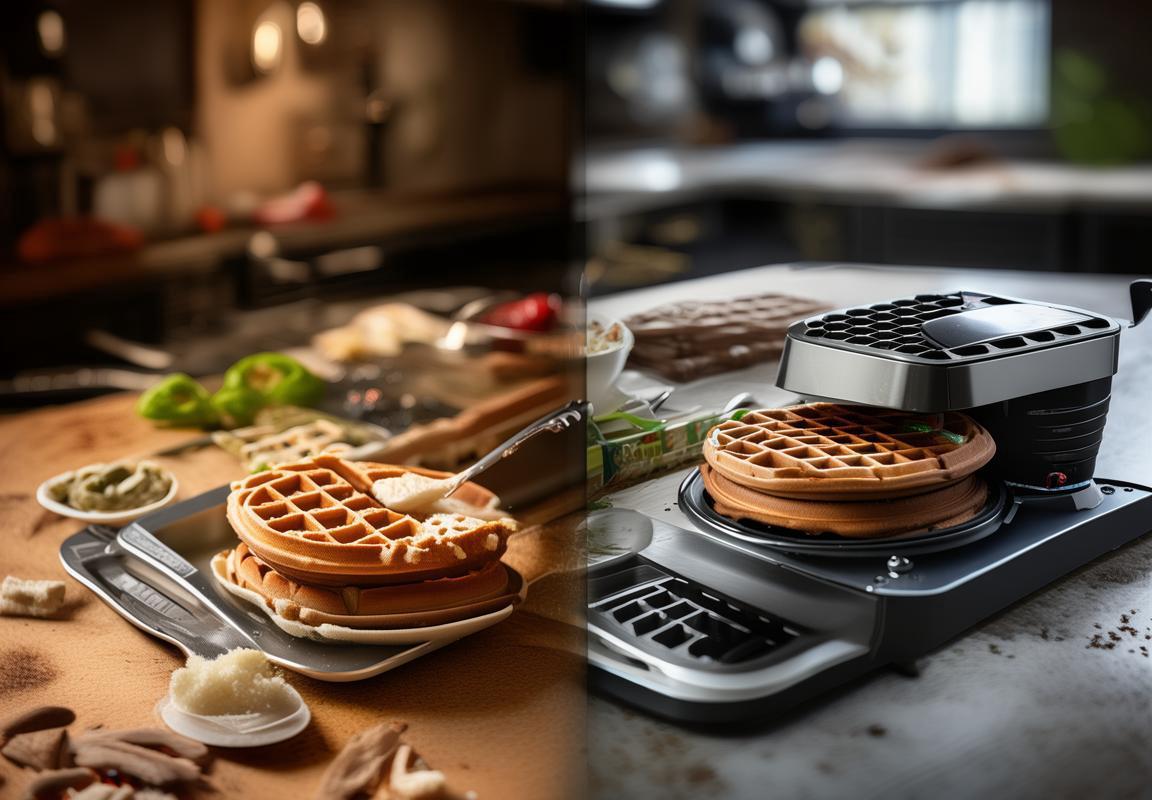
The Role of Online Retail in Waffle Baker Sales
In the ever-evolving landscape of kitchen appliances, waffle makers have seen a surge in popularity, and online retail has played a pivotal role in this growth. From the convenience of shopping from home to the vast array of options available, the digital marketplace has transformed how consumers interact with these appliances. Let’s delve into the various aspects of online retail’s influence on waffle baker sales.
The convenience factor cannot be overstated. With busy lifestyles and the desire for efficiency, many consumers prefer the ease of browsing and purchasing waffle makers online. They can compare models, read reviews, and make informed decisions without leaving their homes. This convenience has significantly contributed to the increase in online sales of waffle makers.
The variety offered by online retailers is another driving force. Online platforms provide access to a wide range of brands, designs, and features that might not be available in local brick-and-mortar stores. Consumers can find everything from compact, travel-sized waffle makers to large, commercial-grade models. This diversity caters to different needs and preferences, making it easier for customers to find the perfect waffle maker for their lifestyle.
Moreover, the competitive pricing that online retailers often offer is a major draw for consumers. With the ability to compare prices across multiple websites, customers can secure the best deals and discounts. This price sensitivity is particularly evident during seasonal sales and holidays when consumers are looking for the best value for their money.
The role of social media and influencer partnerships in promoting waffle makers online is also significant. Brands leverage social media platforms to showcase their products, share recipes, and engage with their audience. Influencers, with their established followings, can drive sales by endorsing specific waffle makers and sharing their own waffle-making experiences. This form of marketing creates a sense of community and trust, which can lead to increased sales.
Customer reviews and ratings are invaluable tools in the online shopping experience. Consumers rely on the feedback of others to make decisions, and waffle makers are no exception. Online retailers often feature customer reviews prominently on product pages, allowing potential buyers to gauge the performance and durability of the appliance. Positive reviews can significantly boost sales, while negative feedback can prompt brands to improve their products or customer service.
The integration of e-commerce with home delivery services has revolutionized the purchasing process. Consumers can now order waffle makers online and have them delivered to their doorstep within days, sometimes even hours. This quick and efficient service adds to the convenience and has become an expectation in today’s fast-paced world.
Furthermore, the ability to return or exchange products online has mitigated the risk of purchasing the wrong item. Consumers feel more confident in their purchases knowing that they can return a waffle maker if it doesn’t meet their expectations. This policy encourages trial and experimentation, which can lead to higher sales as consumers are more willing to take a chance on new products.
Lastly, the rise of subscription services has provided a new avenue for waffle baker sales. Companies offer monthly subscription boxes that include a new waffle maker along with accessories and recipes. This not only introduces consumers to new brands and models but also fosters a sense of exclusivity and novelty, driving continued sales.
In conclusion, the role of online retail in waffle baker sales is multifaceted. It ranges from the convenience of shopping from home to the vast variety of options, competitive pricing, influencer marketing, customer reviews, efficient delivery services, and the introduction of subscription models. These factors collectively contribute to the growth of waffle baker sales in the digital marketplace, making online retail an indispensable part of the industry.

Conclusion: Future Prospects for Waffle Bakers in the CE-EN 60335 Era
In the evolving landscape of kitchen appliances, waffle makers have seen a surge in popularity, not just as a staple in home kitchens but also as a key product in the culinary industry. As we delve into the future prospects for waffle makers in the wake of the CE-EN 60335 era, several factors come into play, shaping the trajectory of this market segment.
The integration of smart technology, the rise of health-conscious consumers, and the ever-growing demand for convenience are all contributing to the dynamic growth of the waffle maker market. However, challenges such as regulatory compliance and market saturation must be navigated carefully. Here’s a closer look at what lies ahead.
Waffle makers have transitioned from simple kitchen gadgets to multifunctional devices that cater to a wide range of culinary preferences. The ability to customize waffle shapes, textures, and even nutritional content has opened up new avenues for innovation. This shift has not only expanded the consumer base but has also led to a more discerning market, where quality and innovation are paramount.
The demand for healthier eating habits has spurred the development of healthier waffle options, including those made with whole grains, gluten-free ingredients, and low-calorie formulations. This trend is expected to continue, with consumers seeking balance between indulgence and well-being. The future of waffle makers may see a greater emphasis on health and wellness features, such as adjustable temperature controls and integrated nutritional information displays.
As the world becomes more connected, the role of online retail in waffle baker sales cannot be overstated. E-commerce platforms have become the go-to for convenience and variety, allowing consumers to explore new brands and products with ease. This digital marketplace has also enabled manufacturers to gather valuable consumer insights and adapt their offerings accordingly. The rise of subscription services and direct-to-consumer models has further blurred the lines between traditional retail and online sales.
Despite the advancements and opportunities, the waffle maker market faces several challenges. One of the most significant is regulatory compliance, particularly with the CE-EN 60335 standard. This European safety standard for household appliances ensures that products meet stringent safety, health, and environmental protection requirements. Adhering to these regulations is not only a legal obligation but also a trust-building measure with consumers who prioritize safety in their kitchen appliances.
The complexity of CE-EN 60335 compliance can be daunting, as it involves rigorous testing and certification processes. Manufacturers must invest in quality control systems and often work with third-party testing facilities to ensure their products meet the standard. This can lead to increased production costs and longer time-to-market, but it is a necessary step to maintain consumer confidence and marketability.
Market saturation is another challenge. With numerous brands and models available, consumers have a plethora of choices. Differentiating a waffle maker in such a crowded market requires a unique selling proposition, whether it’s through innovative features, superior quality, or targeted marketing strategies. The ability to stand out in this competitive landscape will be crucial for manufacturers looking to grow their market share.
Moreover, the environmental impact of kitchen appliances is increasingly becoming a concern for consumers and regulatory bodies alike. The future of waffle makers may involve a greater focus on sustainability, including the use of eco-friendly materials, energy-efficient designs, and responsible manufacturing practices. This shift towards sustainability not only aligns with consumer values but also opens up new opportunities for product innovation and differentiation.
In conclusion, the future prospects for waffle makers in the CE-EN 60335 era are promising yet complex. As manufacturers continue to innovate and adapt to changing consumer preferences and regulatory landscapes, they will need to balance quality, safety, and sustainability. The key to success lies in understanding the evolving needs of consumers, leveraging the power of online retail, and navigating the challenges of compliance and competition with strategic foresight. With these considerations in mind, the waffle maker market is poised for continued growth and innovation.